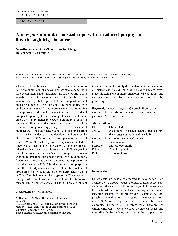摘要
Plastid-to-nucleus retrograde signaling coordinates the expression of nuclear photosynthetic genes with the developmental and functional state of the plastid. These signals are essential not only for coordinating the expression of photosynthetic genes both in the plastome and nuclear genome, but also for plants to respond optimally to environmental stress. In the present study, we found that the expression of the nuclear genes that encode plastid and non-plastid photosynthesis-related proteins was still maintained or slightly higher in cr3529, a chlorophyll deficient mutant of oilseed rape that possesses an arrested development of chloroplasts, suggesting that the expression of photosynthesis-related nuclear genes was uncoupled from the normal dependence on the developmental state of the chloroplast in cr3529. When the development of the plastid in cr3529 and the wild type was completely inhibited by lincomycin, much higher expression of photosynthesis-related nuclear genes was observed in cr3529, suggesting that the genomes uncoupled (gun) phenotype of cr3529 is even more apparent than under normal growth conditions. Lincomycin treatment also derepressed the expression of plastid genes in cr3529. The determination of porphyrin flux through Mg-chelatase showed that the content of protoporphyrin IX and Mg-protoporphyrin decreased in cr3529. The obvious gun phenotype of cr3529 under normal growth conditions and the pattern of tetrapyrrole metabolism in cr3529 suggest that it is a new gun mutant that could be used to study the regulation of the expression of nuclear and plastid genes by plastid-to-nucleus retrograde signaling under more physiological conditions and the mechanism of plant stress responses mediated by plastid signals.
- 出版日期2013-1
- 单位四川大学
